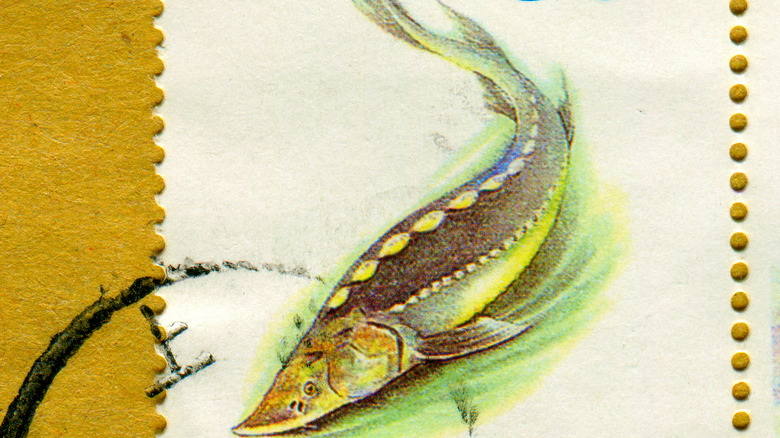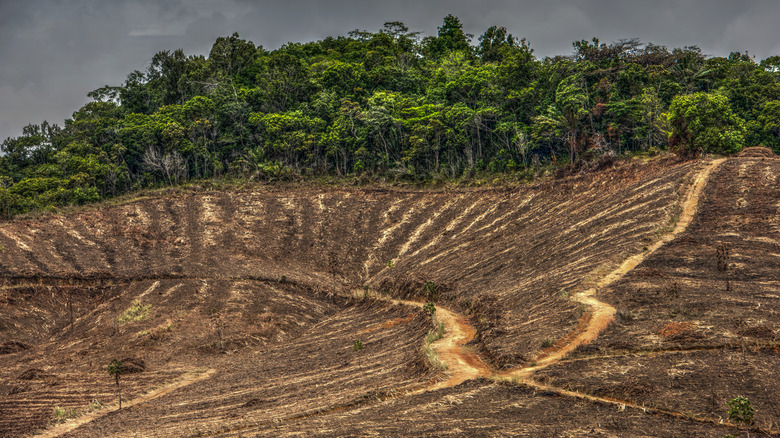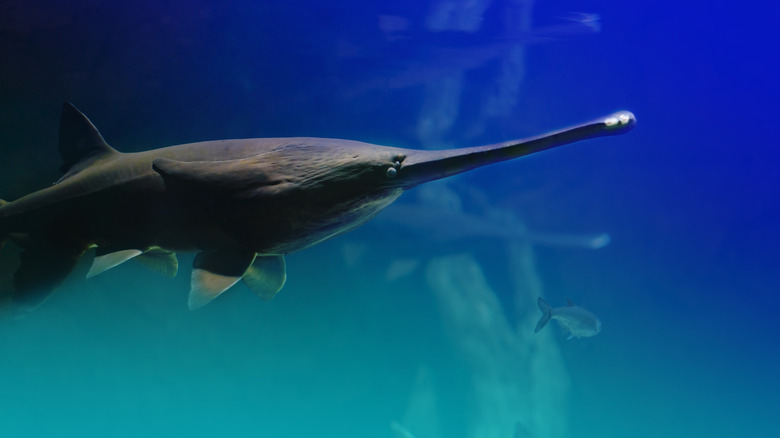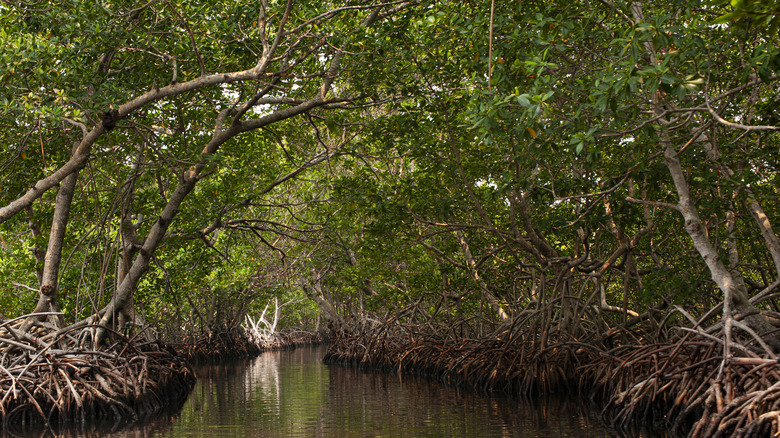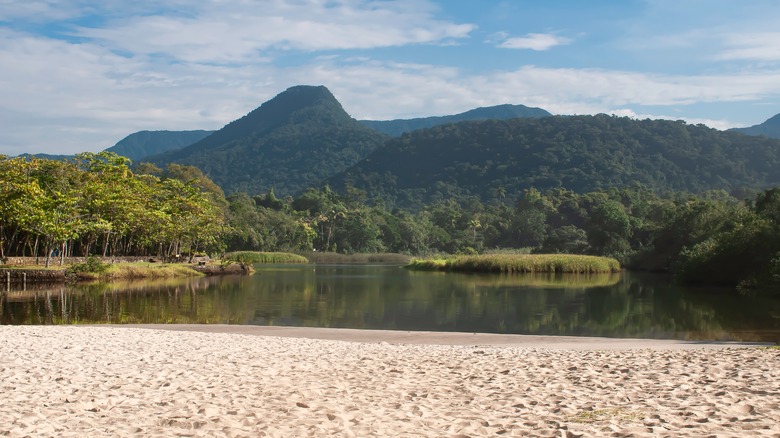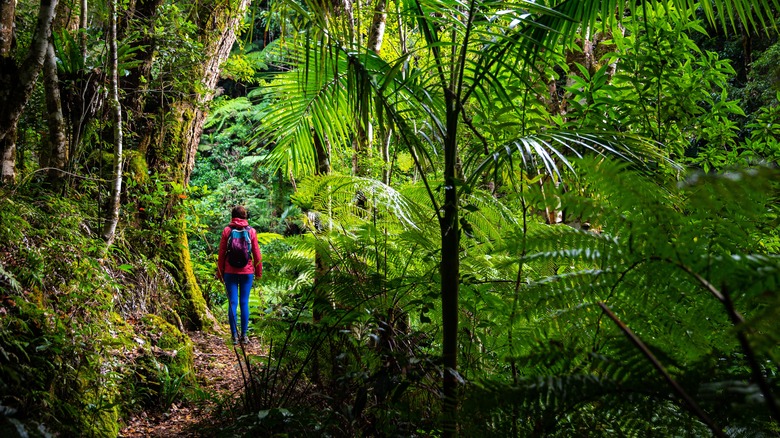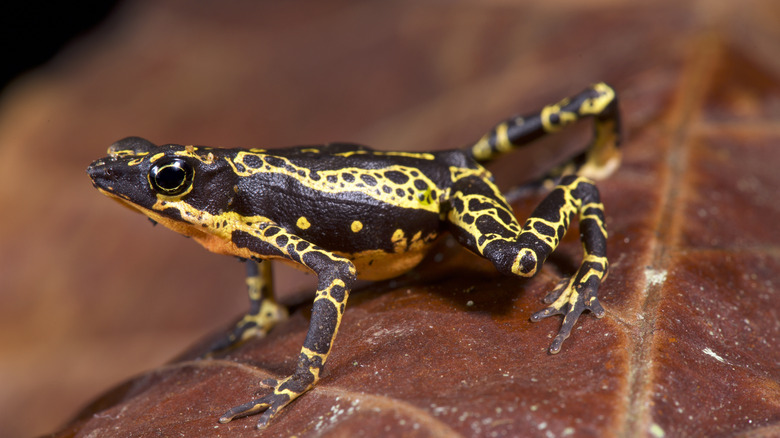11 Animals That Went Extinct In The Last Decade
With the effects of global warming and climate change, scientists and environmentalists alike are all increasingly worried about the extinction of multiple world species. Currently, there are at least 46,300 species, or nearly 30%, at risk of extinction overall. These include animals, such as amphibians, reptiles, mammals, and sharks.
As conservation efforts are taking place to protect some of the world's most vulnerable species, you might start hearing more about those animals that are endangered and critically endangered, with the latter the most at risk of dwindling population numbers. Among these include black rhinos, African forest elephants, hawksbill turtles, amur leopards, and mountain gorillas, just to name a few. Sadly, a number of animals have also not been spotted in several years and are now presumed extinct. In order to move forward in conservation efforts, it's important to take a look back on some of the most recently declared animal extinctions and their causes.
Alagoas foliage-gleaner (Philydor novaesi)
Primarily known as a forest inhabitant in Brazil, the Alagoas foliage-gleaner was a bird that has not been observed in the wild since 2011. It grew up to 18 centimeters long, and sported brown or black heads with varying shades of brown and olive colored feathers on their bodies. This bird also had a distinctive cinnamon-colored stripe. Unlike other types of birds you might be familiar with in North America, the Alagoas foliage-gleaner was not known to migrate outside of its habitat.
These birds primarily lived in the inland parts of the state of Alagoas in Brazil until they suffered from significant changes to the land. Unfortunately, as with other species in the area, the main threats to the Alagoas foliage-gleaner involved habit losses from logging, charcoal processing, and livestock farming. The average lifespan was also only 4.7 years, which likely further contributed to issues with keeping up with the number of lost species. The Alagoas foliage-gleaner was declared extinct in 2019.
Chinese paddlefish (Psephurus gladius)
The Chinese paddlefish was among the largest freshwater species of its kind in the world before disappearing in the early 2000s. In fact, its last known sighting was officially recorded in 2003. Tragically, this was when researchers tagged and released a female Chinese paddlefish, only to lose tracking communications just 12 hours later. It is not known what happened to this exact fish, but scientists have declared the species extinct since then. While formally declared as extinct by the International Union for Conservation of Nature and Natural Resources (IUCN) in 2019, researchers believe the Chinese paddlefish has actually been extinct since 2010.
The loss of the Chinese paddlefish is particularly significant in that it was thought to be just one of two types of its kind, with the American paddlefish the other known living type of paddlefish in the world. Like other types of paddlefish, the Chinese paddlefish was a descendent of giant fish from the Lower Jurassic period. Its demise was attributed to fishing and harvesting practices, as well as actions that affected its habitat, such as the creation of dams. The Chinese paddlefish primarily lived in fresh rivers in China, and could live up to 30 years.
Chiriqui Harlequin frog (Atelopus chiriquiensis)
The Chiriqui Harlequin frog was perhaps best known for its variety of colors and large, webbed feet. Females sported distinctive orange stripes that were outlined in black, while males could also have yellow, red, brown, and green coloring on their bodies. Their eyes could have gold, orange, or green coloring, oftentimes with one eye different than the other. Female Chiriqui Harlequin frogs were larger than their male counterparts on average, ranging between 1 ½ to 2 inches long.
This frog was indigenous to the areas of Costa Rica and Panama, where it often could be found among forests or wetlands based on weather conditions and reproductive needs. Unfortunately, the frog has not been seen for several years after reports of marked population declines, and it was formally declared extinct in 2019. It's thought that climate change may have played a role, but the biggest threat to the Chiriqui Harlequin frog was amphibian chytrid fungal disease.
Corquin robber frog (Craugastor anciano)
The Corquin robber frog was another frog species to be declared extinct by the IUCN in 2019. Native to mainland, western areas of Honduras, this frog primarily lived in forested and wetland areas, and it was not considered a migratory species. Its decline can be attributed to habitat losses via severe droughts, logging practices, and flash flooding events.
Corquin robber frog population losses were noticed as early by the 1990s, despite the species only having been first discovered in 1988. Before its decline, however, the Corquin robber frog was also considered relatively rare. Scientists believe this particular frog had difficulty adapting to habitat changes, but fungal diseases also likely played a role in its extinction. Due to its late discovery followed by its rapid decline shortly thereafter, not many details are known about this frog. One thing that makes the Corquin robber frog unique, however, was its preference for living along streams.
Cryptic treehunter (Cichlocolaptes mazarbarnetti)
While amphibians have made up a large portion of species officially declared extinct in recent years, conservationists are increasingly worried about vulnerable birds, too. Like the Alagoas foliage-gleaner, the Cryptic treehunter was another type of bird native to Brazil. It primarily lived along the Atlantic Forest in the northeastern regions of the country.
Tragically, the Cryptic treehunter was first discovered in 2014, only to be declared extinct just five years later in 2019. Fires, logging, and livestock ranching were thought to be the primary contributors to the loss of this bird, as it was not migratory and could not survive the manmade loss of forests it depended on for survival. Part of the reason why the Cryptic treehunter may not have been discovered sooner is the fact that it looked very similar to the Alagoas foliage-gleaner, thanks to its brown feathers. However, unlike the Alagoas foliage-gleaner, the Cryptic treehunter had a black head and an orange tail, and was also slightly larger in size.
Jalpa false brook salamander (Pseudoeurycea exspectata)
The Jalpa false brook salamander is another type of amphibian that is now thought to be extinct. It was indigenous to Guatemala and known for its distinct colorings. The species sported a metallic-blue belly, but a dark red-brown coloring on its back. While there are differences between salamanders and small lizards, the Jalpa false brook salamander was similar to lizards in that it was long and thin-bodied. Scientists believe the salamander didn't migrate, and so it only stayed in the forested areas of its native region of Guatemala.
Interestingly, the last noted sightings of the Jalpa false brook salamander occurred in 1976, but the species wasn't officially declared extinct until 2019. Researchers spent decades trying to find the species within Guatemalan forests and surrounding areas, but to no avail. Another explanation for the delay in status is that there have been look-alikes spotted, which later turned out to be cousins of the salamander. A combination of logging and agricultural development are thought to have contributed to the loss of this unique salamander.
Mountain mist frog (Litoria nyakalensis)
Native to northeastern Australia, the mountain mist frog primarily inhabited the tropical area of Queensland. It was considered a medium-sized amphibian, reaching over 2 inches in length on average. The mountain mist frog could likely easily hide in available foliage in its wetland surroundings thanks to its earthy colors that ranged from grey to brown, and also its pink or cream-colored belly. What distinguished this frog from other species were its large copper-colored eyes and large webbed toes.
Unfortunately, the mountain mist frog was another amphibian that fell victim to the notorious chytrid fungal disease. This Australian native was last seen in the wild in 1990, and it was given a critically endangered status. In 2021, the IUCN declared the mountain mist frog extinct. The organization also cited increased logging in the Queensland region as a possible contributor to the frog's tragic demise.
Pass stubfoot toad (Atelopus senex)
Native to forested areas of Costa Rica, the pass stubfoot toad was also known to inhabit mountainous parts of this region. It was considered a medium-sized amphibian known for its long and narrow head. The pass stubfoot toad also sported a variety of colors. Both females and males could have green, blue-green, black, or blue-gray coloring, while females were also known to have patches of white, green, and yellow. Also, unlike other frogs and toads, the pass stubfoot toad was known to walk more than it hopped.
This Costa Rican toad was first described in 1952. However, like many other amphibians in the region, the pass subfoot toad quickly became endangered shortly after its discovery due to changes to its habitat. Scientists believe the largest population decline happened in the late 1980s. The pass stubfoot toad was also not considered a migratory species, and it was declared extinct in 2019.
Po'ouli (Melamprosops phaeosoma)
The po'ouli was a type of honeycreeper first discovered on the Hawaiian island of Maui in 1973 along its Haleakalā volcano, apparently one of the plants and animals that could be found in volcanic areas. Known as a stout bird with shorter-than-usual wings and tails, the po'ouli was also coveted for its distinct black markings. While most of its body was full of brown, white, and gray feathers, the po'ouli bird had black feathers on its face over white cheeks, which made it look as if the bird was wearing a mask. In fact, po'ouli means "black-faced" in Hawaiian. To date, there are no other indigenous Hawaiian birds with these same types of markings.
Despite its unique physical qualities, the po'ouli faced similar challenges as other Hawaiian birds. Over the decades after its discovery, experts believe the po'ouli faced habitat loss, as well as competition for food from other, non-native animals. Rats were another common problem, as they preyed on both the bird and their eggs. In 2021, despite population recovery efforts, the po'ouli was removed from the endangered species list and recommended for extinct status.
Sharp-snouted day frog (Taudactylus acutirostris)
The sharp-snouted day frog was another type of water frog native to Australia. Also called the sharp-nosed day (torrent) frog, this species was first discovered in 1916. True to its name, the frog was known for its distinctly pointy nose and flat head. It had a mostly brown-colored body with darker V-shaped markings along its back, and unlike other types of frogs that might linger in water, the sharp-snouted frog preferred hanging out in the sun close to sources of water, such as streams. It was also more active during the daytime hours.
Very few sharp-snouted day frogs have been reported since 1994, and the IUCN declared them extinct in 2021. However, due to declining numbers, some scientists and other organizations declared the sharp-snouted day frog to be declared extinct as early as 1992. Despite the conflicting reports, researchers can agree that the primary causes of population losses in this frog can be attributed to chytridiomycosis fungal infections as well as habitat losses across the region.
Yangtze sturgeon (Acipenser dabryanus)
Also known as Dabry's sturgeon, this species of freshwater fish once lived almost exclusively in the Yangtze River in China. It was known for being a relatively large fish, with an average size of 51 inches and weighing an average of 35 pounds, though it was also considered small for a sturgeon. The Yangtze sturgeon also had a fairly lengthy average lifespan of about 30 years. Researchers published by Environmental Biology of Fishes declared the Yangtze sturgeon as "rare" in 1997
The Yangtze sturgeon was not considered a migratory species, which left it even more vulnerable to changes in its habitat. Among these include commercial shipping along the Yangtze River (which has since suffered some diversion problems), as well as other changes from dams, fishing, and runoff from agricultural and industrial plants. In particular, researchers believe the 1981 creation of the Gezhouba Dam in the Hubei Province created significant population problems because it prevented the sturgeon from being able to travel downstream along the Yangtze River. The fish was officially declared extinct in 2019.
